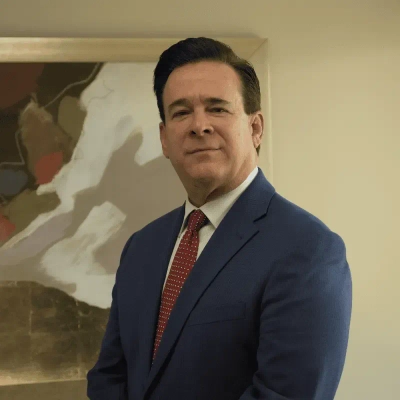7 Ways Small Business Insurance Strategies Should Evolve as Your Company Grows
As small businesses grow, their insurance needs evolve in complex ways. This article explores seven key strategies for adapting insurance coverage to match a company's expansion, drawing on insights from industry experts. From prioritizing safety measures to incorporating cyber liability protection, these approaches can help business owners safeguard their growing enterprises effectively.
- Evolve Insurance with Business Growth
- Prioritize Safety to Reduce Premiums
- Add Business Interruption Coverage
- Adopt Parametric Insurance for Climate Risks
- Assess Insurance Strategy More Frequently
- Incorporate Cyber Liability Protection
- Tailor Coverage to Expanding Services
Evolve Insurance with Business Growth
I don't have a "small business insurance strategy" that has evolved. For a tradesman, insurance is a non-negotiable part of the business. The "evolution" is a simple, practical change.
When I first started, I was a one-man operation, and my insurance was straightforward. However, as I hired more employees and took on larger projects, my insurance needs changed. I had to obtain a new policy that covered my team and the more substantial jobs. I transitioned from being an individual with insurance to a business owner with a comprehensive policy.
The one adjustment that proved particularly important was engaging a good broker. Many tradespeople will simply opt for the least expensive insurance they can find, but I learned that a good broker is worth the investment. He understood my business and helped me secure the right policy for my needs. He also helped me understand the realities of policy coverage. He's my partner in ensuring that my business is protected.
The impact has been on my business's security and my peace of mind. By having the appropriate insurance, I'm able to protect my business from potentially massive financial losses. I'm not concerned about mistakes on the job or substantial lawsuits. My team also knows they're protected, which gives them a sense of security. This adjustment has led to a much better work environment and significantly reduced stress.
My advice is straightforward: your best "insurance strategy" is a good broker. A business cannot succeed without an excellent reputation. Instead of searching for corporate gimmicks, focus on building a genuine relationship with your broker. That's the most effective way to "evolve your insurance strategy" and maintain a healthy business.

Prioritize Safety to Reduce Premiums
My "insurance strategy" has evolved significantly since I started. When I was just a one-man crew, my insurance was a simple bill I paid. As my company grew, my insurance costs increased. My approach had to evolve from merely paying a bill to being proactive about our safety.
The one adjustment that proved particularly important was creating a strict, documented safety program. I began holding weekly safety meetings with my crew. We discuss ladder safety, proper harness use, and fall protection. I document every single meeting and every piece of safety equipment we purchase. This isn't just about following regulations; it's about cultivating a culture of safety.
This simple adjustment has had a substantial impact on my business. When it's time to renew our policy, I don't just request a lower rate. I present my insurance broker with a file containing all of our safety records. I demonstrate that we are a business committed to safety. This has resulted in a significantly lower premium and much less risk for my business.
My advice to other business owners is this: stop viewing insurance as just an expense. The best way to "evolve your insurance strategy" is to become someone who is dedicated to running a safe business. The most effective "adjustment" you can make is to be a person who is committed to safety in your operations. A safe business is a profitable one.
Add Business Interruption Coverage
My small business insurance strategy has evolved from focusing only on basic liability coverage to building a layered approach that protects both operations and growth opportunities. Early on, I carried only general liability, which felt sufficient at the time. As the company grew, I realized that gaps in coverage could create serious risks. One adjustment that proved particularly important was adding business interruption insurance. This coverage ensures that if operations are disrupted by events outside my control, revenue and expenses are protected. It gave me peace of mind and more confidence when signing long-term contracts, since clients could see that I had safeguards in place. The broader lesson I learned is that insurance should evolve with your business model. What feels like an extra cost at first can become a strategic asset that supports client trust and long-term stability as the company scales.
Adopt Parametric Insurance for Climate Risks
Our earliest insurance strategy was practical yet unsophisticated, covering only essential categories. With expansion, we realized resilience required a far more intentional approach. A single disruption could ripple across interconnected ventures, magnifying potential damage. To address this, we began aligning insurance with strategic planning. This shifted coverage from a reactive safeguard into a proactive shield.
The adjustment that proved most vital was adopting parametric insurance for climate-related risks. Weather extremes increasingly threatened both crops and energy operations. Parametric policies provided rapid payouts based on measurable triggers, ensuring liquidity during disruption. That support enabled quick recovery without bureaucratic delays or financial strain. It demonstrated foresight and aligned with our wider sustainability commitments.
Assess Insurance Strategy More Frequently
As we've grown, this is something we assess more often. It's important to regularly assess your insurance strategy no matter what size your business is, but arguably it becomes increasingly important to do this more frequently as you grow. As you grow, you bring more people onto your team, build up more assets, and ultimately have more to lose.
Incorporate Cyber Liability Protection
As my Miami-based personal injury and medical malpractice law firm has grown, our insurance strategy has had to evolve from basic protection to comprehensive risk management. Initially, we carried only the required legal malpractice coverage and a general liability policy. However, as our caseload increased—and the value of our cases grew—we realized the exposure we faced wasn't just legal, but operational.
The most important adjustment we made was adding cyber liability insurance. As we began handling more sensitive client data and using cloud-based platforms for case management and medical record storage, the risk of a data breach became very real. One incident could threaten client trust and damage our reputation beyond repair.
We also increased our malpractice limits to reflect the size and complexity of the cases we now take on. High-stakes medical malpractice cases come with higher potential claims, and having stronger coverage not only protects the firm—it reassures clients.
As a small business owner, you can't just set your insurance once and forget it. Your coverage needs to grow with your firm, your technology, and your client base. That evolution has been key to keeping our practice stable, credible, and resilient in a high-risk legal environment.
Tailor Coverage to Expanding Services
As the company expanded services from roofing into restoration and solar, insurance shifted from a single general liability policy to layered coverage tailored to each division. The most important adjustment was adding professional liability coverage once we began offering consultative services, such as damage assessments and solar planning. That change addressed risks not covered under standard policies and proved critical when clients relied on our recommendations to make financial decisions. Without it, a dispute over guidance could have created exposure beyond project-related claims. The expanded strategy not only protected assets but also strengthened credibility with clients and partners who recognized the depth of coverage as a sign of stability.







